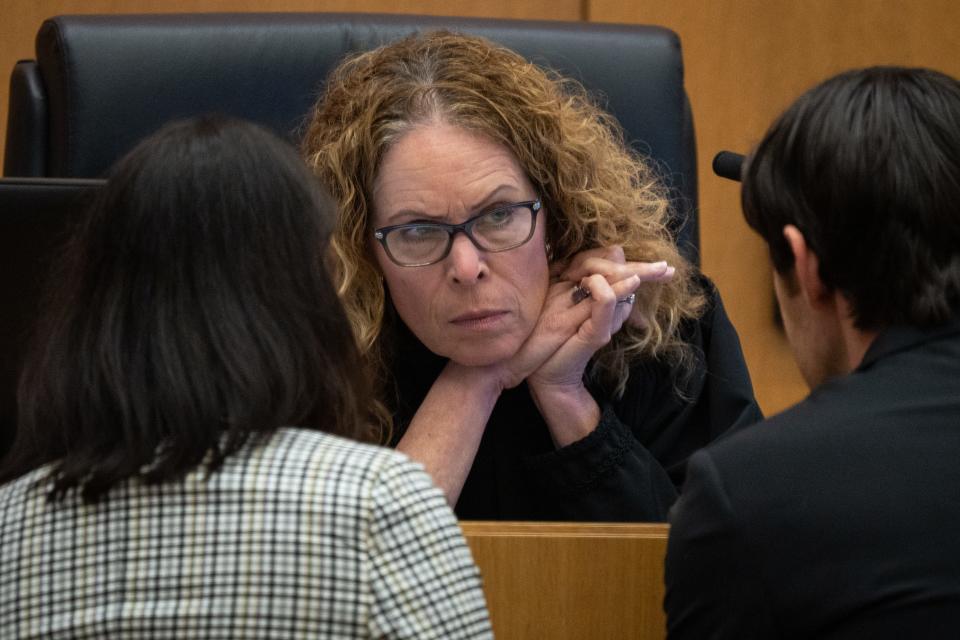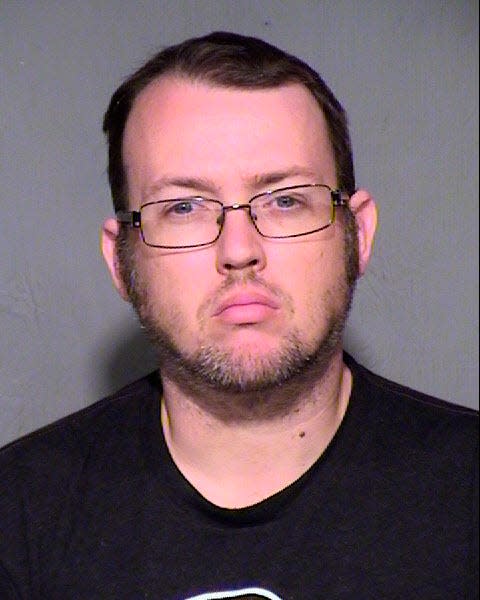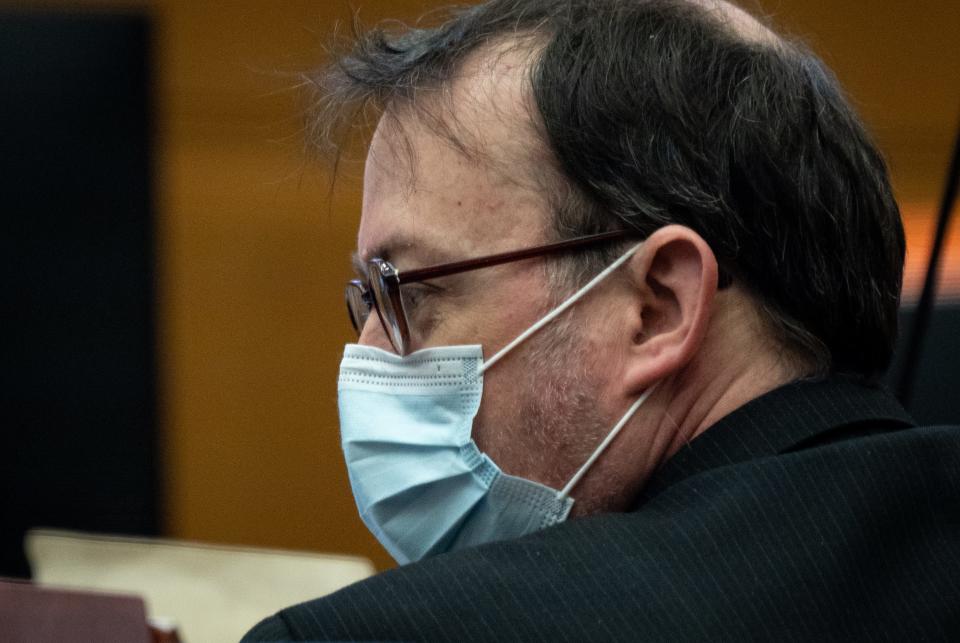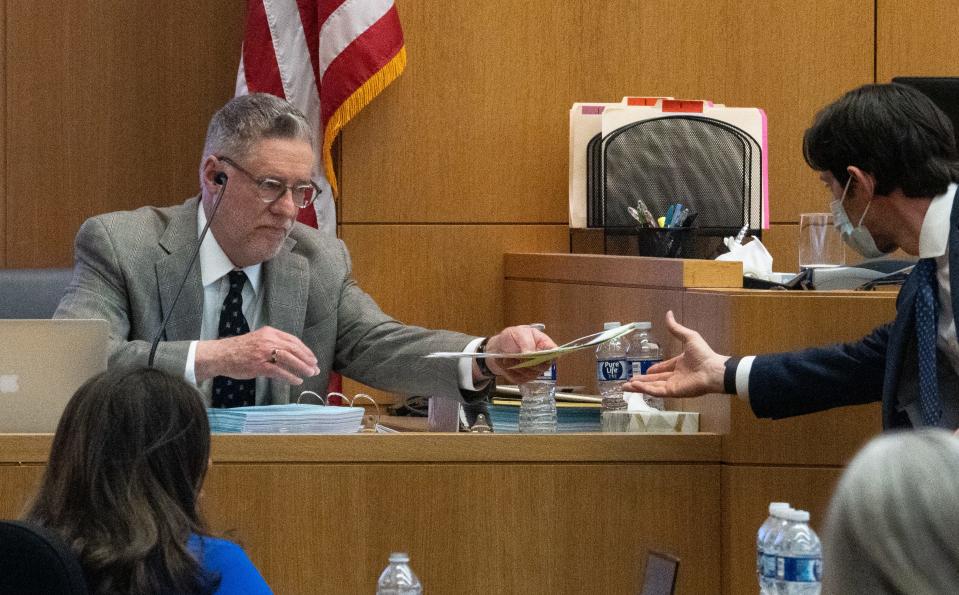'Canal killings': State calls insanity defense 'nonsense' as the case goes to the judge
Prosecutor Vince Imbordino had the last word Thursday in the trial of Bryan Miller, who is charged with murdering two young women in Phoenix 30 years ago.
He used it to deliver a message to Judge Suzanne Cohen: "Don't get caught up in the weeds."
Over the course of the marathon bench trial, which started on Oct. 3, 2022, there had been plenty of evidence about Miller's lousy childhood, Imbordino said.
There had been weeks of testimony from expert witnesses who proffered opinions and an array of diagnoses in support of Miller's insanity defense.
The defense was "nonsense," the prosecutor said, and the facts supported a different story.
“This defendant at his core is a sexual sadist. He enjoys hurting people for his own sexual pleasure," he told the judge. "That’s who he is. That’s who he was in 1992 and 1993."

Cohen was Imbordino's only audience, with no jury in the capital murder case. She will deliberate alone and deliver a verdict.
He urged the judge to use her common sense, to not overlook the physical evidence in favor of the tsunami of information about Miller's life.
"Whenever you're deep in the weeds," he told Cohen, "you can't see."
'Canal killings': Lawyers present contrasting portraits of defendant in trial's closing arguments
Two women killed in the early 1990s
As Imbordino spoke, he displayed grainy photos of Angela Brosso and Melanie Bernas on the screens dotted around the courtroom. In the second month of the trial, the 30-year anniversary of Brosso's death had ticked by.
She was found dead on the morning of Nov. 9, 1992, after going out to cycle alone on the canal the evening before. Drag marks led from the bike path up to where her body lay in a field just east of the apartment building by Cactus Road and Interstate 17 where she lived with her boyfriend.
Her torso was so mutilated it had almost been cut in two. And her head was missing, found 11 days later in the Arizona Canal, a couple of miles south of where she was killed.
Ten months later, on Sept. 22, 1993, the body of high school student Melanie Bernas was found in the canal, not far from where Brosso's head was located. She was dressed in a turquoise bodysuit that her mother said wasn't hers.
She is also believed to have been cycling along the canal, her bicycle missing from home where she was last seen by her mom the night before.
Both women had suffered a fatal stab wound to the back that pierced their lungs and aortas. Neither of their bicycles were ever found.
The murders were soon linked by forensic evidence, the same unknown man leaving sperm samples on Brosso and Bernas and items of clothing at the scene.
The case ran cold for more than two decades until new DNA analysis led police to charge Miller in 2015.
At the start: The man accused in the Phoenix canal killings goes to trial 30 years after 2 women died
'Trauma state' responsible for murders
On Wednesday, defense attorney Richard Parker had shown pictures of Miller, spanning from childhood into adulthood, as he summarized the insanity defense.
The crux of the defense is that Miller's consciousness split in two due to the abuse he suffered as a child, and that his "trauma state" was responsible for the murders, not the ordinary Miller who exists day-to-day.
The trauma state developed unconsciously as a coping mechanism, Parker said, a place where Miller stored emotions he couldn't handle: anger, rage, humiliation, disturbed fantasies about sex and revenge. Miller's normal, day-to-day state had little or no awareness of it, he said.

Parker said it was highly probable that at the time of the murders, Miller had been triggered by stressful events and the trauma state had taken over, committing the murders and leaving Miller's normal state with "no access" to the memory of doing so.
"The Bryan who is sitting here in the courtroom today — the shy, quiet, awkward, sometimes goofy individual — is not the same Bryan who committed these offenses," Parker said Wednesday.
Imbordino said Thursday that the defense had tried to put Miller into "some kind of costume."
"The bad Bryan is not here today," he said, referencing Parker's address. "Well, the Bryan who killed these two young women is surely here today."
Imbordino said there was ample evidence Miller knew what he was doing at the time of the crime.

He showed the courtroom pictures of the bloody trail leading to where Bernas's body had been moved, first into one patch of bushes and then down the bike trail to another.
The defense would say it wasn't a good plan, Imbordino said, that it made little sense Miller would launch these attacks on a well-traveled bike path.
"I don't know what his options were, but it worked," Imbordino said. "Whatever the plan was, how bad the plan was — if it was — it worked, because we didn't find out who he was until 2015."
The scene of Brosso's murder suggested she had tried to get away after the first stab wound, Imbordino said, leaving a trail of blood down the bike path.
"He doesn't gain control of her until she's lost enough blood that she collapses and dies, 152 feet down that asphalt trail," he said. "Does he attack her out in the open? No. He drags her out of view of everyone."
"He took his time. He knew exactly what he was doing."
He also pointed to evidence of things Miller said.
Miller had told detectives he had only ridden once under the Interstate 17 underpass close to where Brosso's head and Bernas's body was found, but his ex-wife testified they rode there often, Imbordino said.
And there was evidence that 30 years ago Miller's roommate, Randy McGlade, had remarked to Miller that he had been out riding the night Bernas was killed.
"And the defendant said, 'Well, I was riding to the east'," Imbordino said. "Which tells you, circumstantially, the defendant well knew where Melanie had been murdered. Because if he didn't, there's no reason to say 'I was riding on the other side of the valley'."

Expert testimony had 'no substance'
Parker urged Cohen to prefer the evidence of defense expert witnesses when it came to dissociative disorders.
Dr. Bethany Brand was the "gold standard" of dissociation experts, he said, and Dr. Mark Cunningham had a more comprehensive methodology than any state expert.
Imbordino said neither should be relied upon. He likened Cunningham's testimony to a raccoon dipping a cracker in water and having it dissolve.
"It’s as if it didn’t exist anymore. Where did it go?" he said. "Once you dip it in the water, once you carefully analyze it, it has no substance."
He pointed to the testimony of Dr. Leslie Dana-Kirby, a court-appointed expert who was called as a witness by the state, and who said that, in her view, Miller was not insane at the time of the murders.
Dana-Kirby testified that as far as she was aware, the only things Miller claimed to not remember were the murders of Brosso and Bernas.
He recalled other potentially traumatic or shameful events, the expert had said, citing abuse from his mom, stabbing a woman when he was 16, shoplifting and arson when he was a teenager.
"She found it implausible, committing the first crime and forgetting it and then committing the second murder," Imbordino said. "Of course it's implausible."
The notion that Miller had a dissociative disorder was just not well-founded, he told Cohen.
"He is as guilty as he can be. The facts support it. At his core, this shows who he is."
The judge gave no indication of how long her deliberations would take, but due to scheduling reasons, Tuesday is the earliest it might be reached.
This article originally appeared on Arizona Republic: 'Canal killings' trial: Insanity defense 'nonsense', state says

